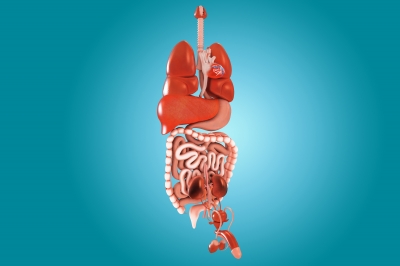Diverticulitis – An Overview
Diverticulitis – An Overview

Image courtesy of cuteimage at FreeDigitalPhotos.net
Diverticulitis is a condition in which diverticuli in the colon rupture. The rupture results in infection in the tissues which surround the colon. The colon is the large intestine and is a long tube like striation that stores and then eliminates waste material. As a person gets older, pressure within the colon causes bulging pockets of tissue, or sacs, that push out from the colon walls. A small bulging sac pushing outward from the colon wall is called a diverticulum. More than one bulging sac is referred to as diverticula. Diverticula can occur throughout the colon, but most are common near the end of the left colon. This is referred to as the sigmoid colon. The condition of having these diverticula in the colon is called diverticulosis.
Diverticulitis – An Overview
As a person gets older, pressure within the colon causes bulging pockets of tissue, or sacs, that push out from the colon walls. A small bulging sac pushing outward from the colon wall is called a diverticulum. More than one bulging sac is referred to as diverticula. Diverticula can occur throughout the colon, but most are common near the end of the left colon. This is referred to as the sigmoid colon. The condition of having these diverticula in the colon is called diverticulosis
Diverticulitis occurs when bacteria get trapped in the pouches. This leads to infection or inflammation. No screening is available at this time for diverticulitis. Starting at age 40, a procedure called a flexible sigmoidoscopy may be recommended every 3 to 5 years or a colonoscopy every 10 years as a screening exam for cancers of the colon and rectum. Both flexible sigmoidoscopy and colonoscopy involve using a flexible tube with a lighted viewing instrument to see inside the large intestine. These exams are often able to reveal diverticula if they are present. Treatment after recovery from an attack of diverticulitis is aimed at preventing another attack.
More serious complications include diverticulitis, abscess in the pelvis, colon obstruction, and bacterial peritonitis, plus bleeding in the colon. A diverticulum can become infected with bacteria and ruptures, causing diverticulitis. Fever, tenderness, and pain of the lower left abdomen are common symptoms. Constipation or diarrhea may also occur. A collection of pus can develop around the inflamed diverticulum, which leads to the formation of an abscess, usually in the pelvis. On rare occasions, the inflamed diverticula can erode into the urinary bladder, which causes a bladder infection and passing of gas during urination. Inflammation of the colon may also lead to bowel obstruction. On rare occasions, a diverticulum ruptures freely into the abdominal cavity causing life threatening infection caused peritonitis.
No screening is available at this time for diverticulitis. Starting at age 40, a procedure called a flexible sigmoidoscopy may be recommended every 3 to 5 years or a colonoscopy every 10 years as a screening exam for cancers of the colon and rectum. Both flexible sigmoidoscopy and colonoscopy involve using a flexible tube with a lighted viewing instrument to see inside the large intestine. These exams are often able to reveal diverticula if they are present. Treatment after recovery from an attack of diverticulitis is aimed at preventing another attack. This treatment may include getting plenty of fluids daily, gradually increasing the amount of fiber in the diet through fruits, vegetables, wheat bran, and the regular use of a fiber supplement. It is also highly recommended that regular doctor visits are conducted to monitor the condition.


